Exploring Xiantong Temple: A Spiritual Retreat Amidst Natural Beauty
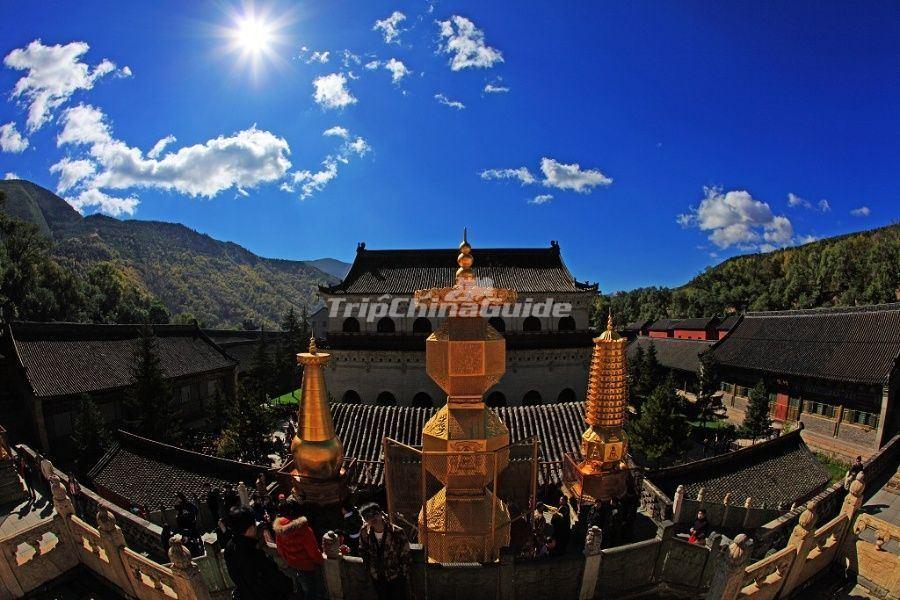
An Essential Guide to Visiting Xiantong Temple
In This Guide
- An Essential Guide to Visiting Xiantong Temple
- The Rich History and Legends of Xiantong Temple
- Main Highlights: What You Absolutely Can’t Miss
- Planning Your Visit: A Practical Guide
- Tickets: Prices, Booking, and Tips
- How to Get There: A Complete Transportation Guide
- Local Cuisine and Accommodation Nearby
- Frequently Asked Questions
- Final Thoughts on Your Trip
Nestled in the serene embrace of Wutai Mountain in Shanxi Province, Xiantong Temple (显通寺) stands as a testament to China’s rich Buddhist heritage and architectural prowess. This ancient temple, believed to be one of the oldest in the country, was established during the Tang Dynasty and continues to captivate visitors with its profound spirituality and historical significance. As you approach, the gentle whispers of history beckon you to explore its hallowed halls, each telling a story of devotion and artistry.
A Cultural Oasis
Xiantong Temple is not merely a site of worship; it is a vibrant cultural oasis where the essence of Buddhism intertwines with the natural beauty that surrounds it. The temple complex comprises several magnificent structures, including the Main Hall, the Heavenly King Hall, and the Sutra Library, each showcasing exquisite craftsmanship that reflects the ingenuity of ancient Chinese architecture. The intricate carvings and the revered statue of Sakyamuni Buddha invite contemplation and reverence, making it an ideal place to immerse yourself in the tranquil aura of Buddhist culture.
Architectural Marvels
The architectural layout of Xiantong Temple is a marvel in itself, with its seven halls aligned along a central axis, each revealing a unique facet of Buddhist art and architecture. The juxtaposition of the temple’s ancient wooden beams against the backdrop of the majestic Wutai Mountain creates a surreal atmosphere, perfect for both reflection and appreciation of the beauty that lies within and around.
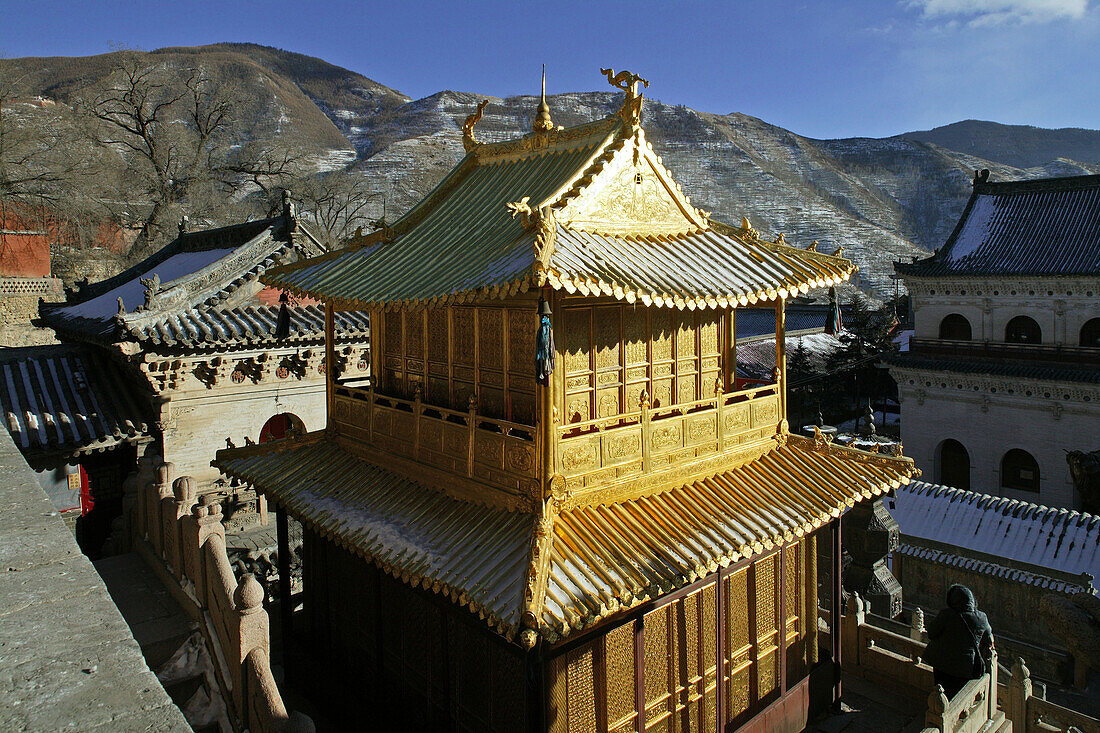
Xiantong Temple.
Visiting Experience
For those eager to delve into a realm of spirituality and history, a visit to Xiantong Temple should ideally last 2-3 hours. This allows ample time to wander through the serene grounds, absorb the peaceful ambiance, and participate in any religious activities that may be taking place, especially during Buddhist festivals when the temple comes alive with vibrant cultural expressions.
Accessibility
Conveniently located near the central area of Wutai Mountain, Xiantong Temple is easily accessible by local tourist buses or taxis. Its proximity to other significant landmarks makes it a strategic stop on your journey through this historic region.
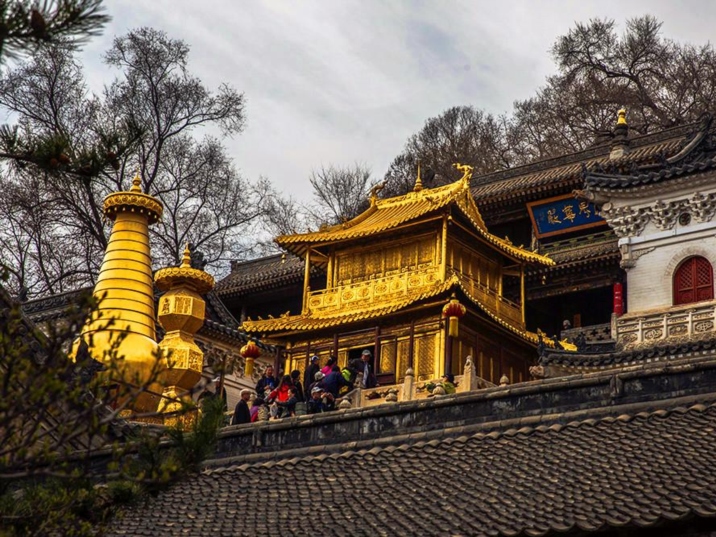
Xiantong Temple.
Final Thoughts
Whether you are a devout Buddhist, a history aficionado, or simply a traveler seeking tranquility, Xiantong Temple offers a profound experience that transcends time. Prepare to be enchanted by its spiritual depth, architectural elegance, and the serene landscape that surrounds this sacred site. As you step through its gates, you embark on a journey not just through space, but through the rich tapestry of Chinese culture and history.
The Rich History and Legends of Xiantong Temple
Xiantong Temple, nestled in the serene beauty of Wutai Mountain in Shanxi Province, is a profound testament to the rich tapestry of Chinese Buddhist history and culture. Its origins date back to the Tang Dynasty, around the 7th century, making it one of the oldest Buddhist temples in China. This temple stands not only as a place of worship but also as a monument to the architectural ingenuity and spiritual depth of ancient China.
Historical Significance
Founding and Growth:
Xiantong Temple was established during the reign of Emperor Xuanzong of the Tang Dynasty. It quickly became a pivotal site for Buddhist teachings and practices, attracting monks and scholars from various regions. The temple’s significance grew in tandem with the flourishing of Buddhism in China, particularly during the Tang and Song Dynasties, which are often regarded as the golden eras of Chinese Buddhism.
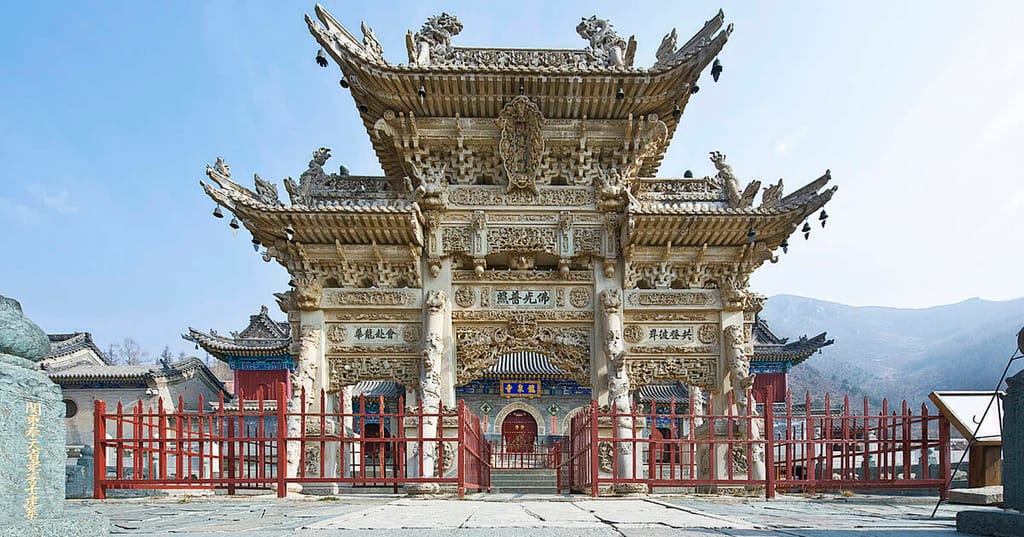
Xiantong Temple.
Cultural Influence:
Over the centuries, Xiantong Temple has influenced Buddhist thought and practice within China. It has served as a meeting point for various Buddhist sects, including the Huayan and Chan schools. The temple’s architecture, characterized by its intricate carvings and statuary, showcases the aesthetic values of these periods, making it a significant site for both spiritual and artistic exploration.
Architectural Marvel
Exquisite Design:
The temple complex comprises several halls and structures, including the Main Hall, the Heavenly King Hall, and the Sutra Library. Each building is a masterpiece of ancient Chinese architecture, featuring ornate wooden beams, painted ceilings, and exquisite sculptures. The Main Hall houses a majestic statue of Sakyamuni Buddha, which is particularly revered for its detailed craftsmanship and spiritual significance.
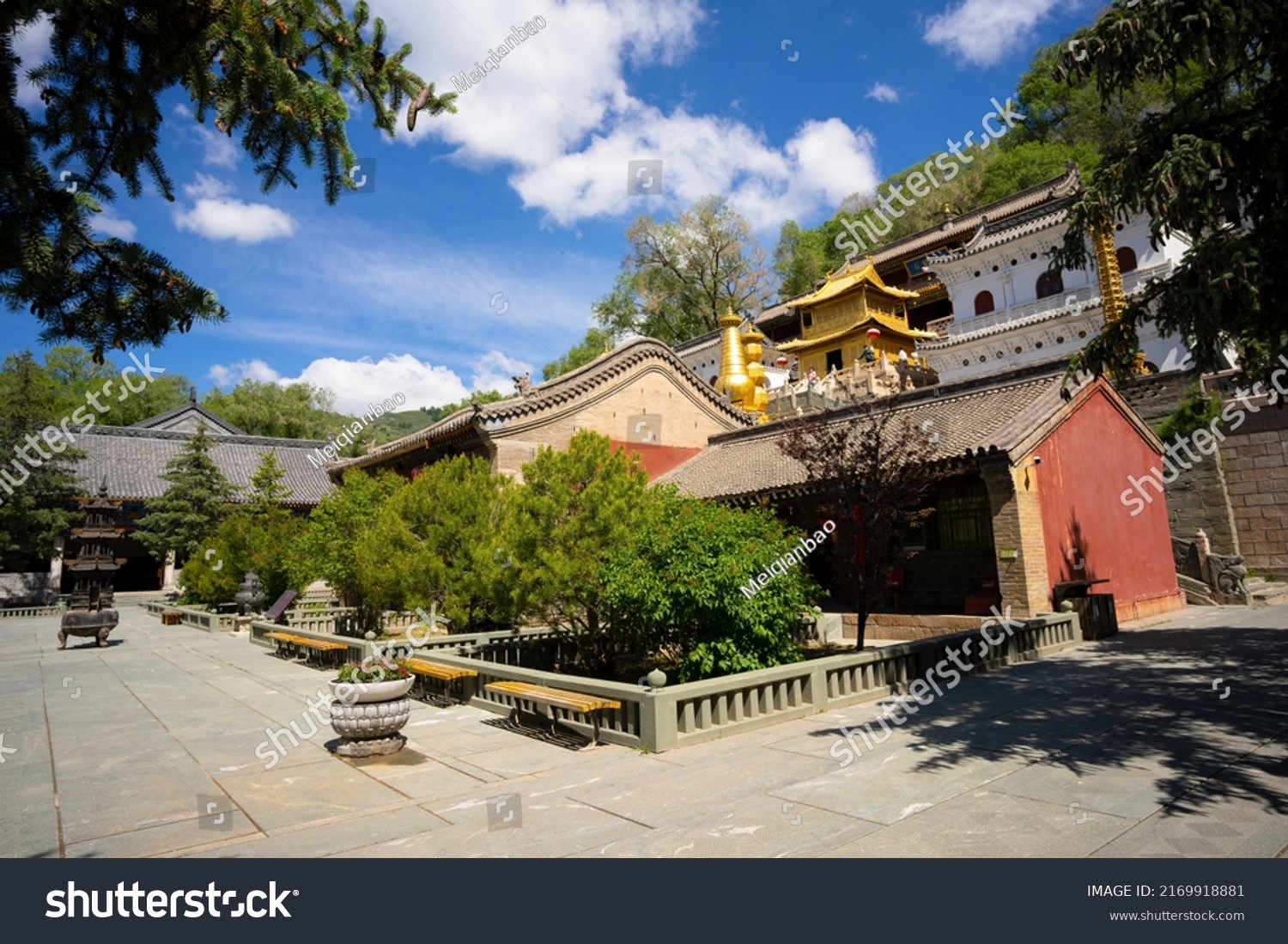
Xiantong Temple.
Preservation of Art:
The temple is not only a site of worship but also a repository of Buddhist art. The carvings and sculptures found within its walls offer insight into the religious iconography of the time, revealing the deep connections between art and spirituality in Chinese culture.
Legends and Folklore
The Guardian Monks:
Local legends speak of guardian monks who once protected the temple from malevolent spirits and intruders. According to tales passed down through generations, these monks possessed extraordinary powers that allowed them to perform miraculous feats. It is said that their presence ensured the safety and sanctity of the temple, making it a revered pilgrimage site.
The Sacred Waterfall:
Another legend associated with Xiantong Temple involves a sacred waterfall located nearby. It is believed that the waters from this waterfall possess healing properties. Pilgrims visiting the temple often hike to the waterfall to collect its water, which they use for blessings and spiritual purification. This practice underscores the temple’s role as a spiritual nexus, where nature and divinity intertwine.
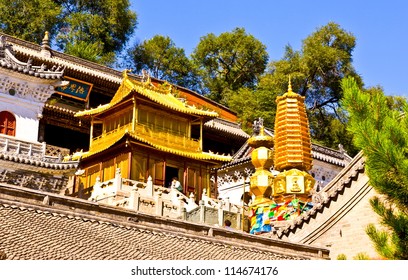
Xiantong Temple.
A Center of Spiritual Experience
Pilgrimages and Festivals:
Today, Xiantong Temple continues to be a vibrant center for Buddhist practice. It hosts numerous religious activities and festivals, particularly during major Buddhist holidays. Pilgrims from across China and beyond come to experience the temple’s serene atmosphere, participate in rituals, and seek spiritual guidance.
A Place of Reflection:
Visitors are often struck by the tranquil environment surrounding Xiantong Temple. The peacefulness of Wutai Mountain, combined with the temple’s rich history, creates an ideal setting for meditation and reflection. Many travelers find that their visit to Xiantong Temple is not just a journey through history but also a personal pilgrimage into their own spirituality.

Xiantong Temple.
Conclusion
Xiantong Temple stands as a beacon of Chinese history and culture, inviting travelers to explore its ancient halls and immerse themselves in the stories woven into its very foundation. With its deep historical roots, architectural grandeur, and vibrant legends, this temple offers a unique glimpse into the heart of Chinese Buddhism and the enduring spirit of its people. Whether you’re a history buff, a culture enthusiast, or a spiritual seeker, a visit to Xiantong Temple promises an enriching experience that transcends time.
Main Highlights: What You Absolutely Can’t Miss
Discovering the Wonders of Xiantong Temple
Nestled in the serene surroundings of Wutai Mountain in Shanxi Province, Xiantong Temple (显通寺) is a treasure trove of ancient architecture and rich Buddhist culture. Whether you are a history enthusiast, an architectural admirer, or seeking spiritual solace, this temple offers an unforgettable experience. Here are the key highlights that you absolutely cannot miss during your visit.

Xiantong Temple.
1. Stunning Architectural Complex
The architectural layout of Xiantong Temple is both grand and intricate, showcasing the exquisite craftsmanship of ancient Chinese builders. The complex includes:
- Main Hall (Daxiong Baodian): Home to an awe-inspiring statue of Sakyamuni Buddha, this hall is a focal point for both worshippers and visitors.
- Heavenly King Hall: This hall features beautifully adorned statues of the Four Heavenly Kings, guarding the entrance to the sacred spaces beyond.
- Sutra Library: A serene place containing ancient scriptures, this library is a testament to the temple’s role in preserving Buddhist texts and teachings.
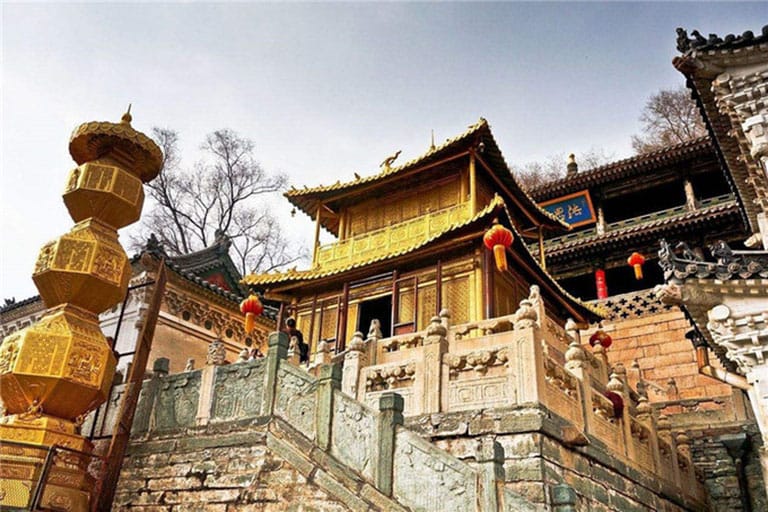
Xiantong Temple.
Each structure reflects the unique architectural style characteristic of Chinese Buddhist temples, with ornate carvings and vibrant colors that captivate the eyes.
2. Exquisite Buddhist Statues
As you wander through the temple, the beautifully carved Buddha statues will undoubtedly leave you in awe. The centerpiece, the Sakyamuni Buddha, is particularly noteworthy for its intricate details and serene expression. The craftsmanship of these statues tells a story of devotion and artistry that has persisted through centuries.
3. Tranquil Environment for Reflection
The temple’s surroundings provide a tranquil atmosphere, perfect for meditation and reflection. The quietude of the area, coupled with the mountain’s natural beauty, creates a sacred space where you can connect deeply with Buddhist teachings and practices. Make time to sit in the gardens or along the temple paths, allowing the peaceful ambiance to wash over you.
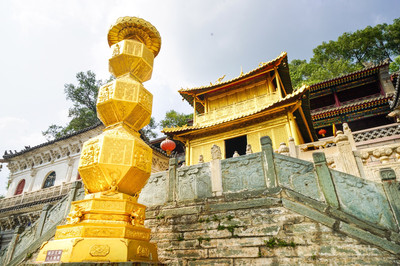
Xiantong Temple.
4. Cultural and Religious Activities
Xiantong Temple is not just a historical site; it is an active center of Buddhist worship. If your visit coincides with Buddhist festivals, you’ll have the opportunity to witness various religious ceremonies and cultural activities. These events provide a rich insight into the living traditions of Buddhism, allowing you to engage with the local community and their practices.
5. Nearby Attractions and Accessibility
Positioned conveniently within Wutai Mountain’s scenic area, Xiantong Temple is easily accessible via local tourist buses or taxis. While you’re in the area, consider visiting other nearby temples like Tayuan Temple and Pusading Temple, each offering a unique glimpse into the region’s spiritual heritage.
6. Ideal Visit Duration
To fully appreciate all that Xiantong Temple has to offer, plan to spend 2-3 hours exploring its halls, appreciating the art, and soaking in the atmosphere. This timeframe allows ample opportunity for reflection, photography, and engagement with the temple’s serene environment.
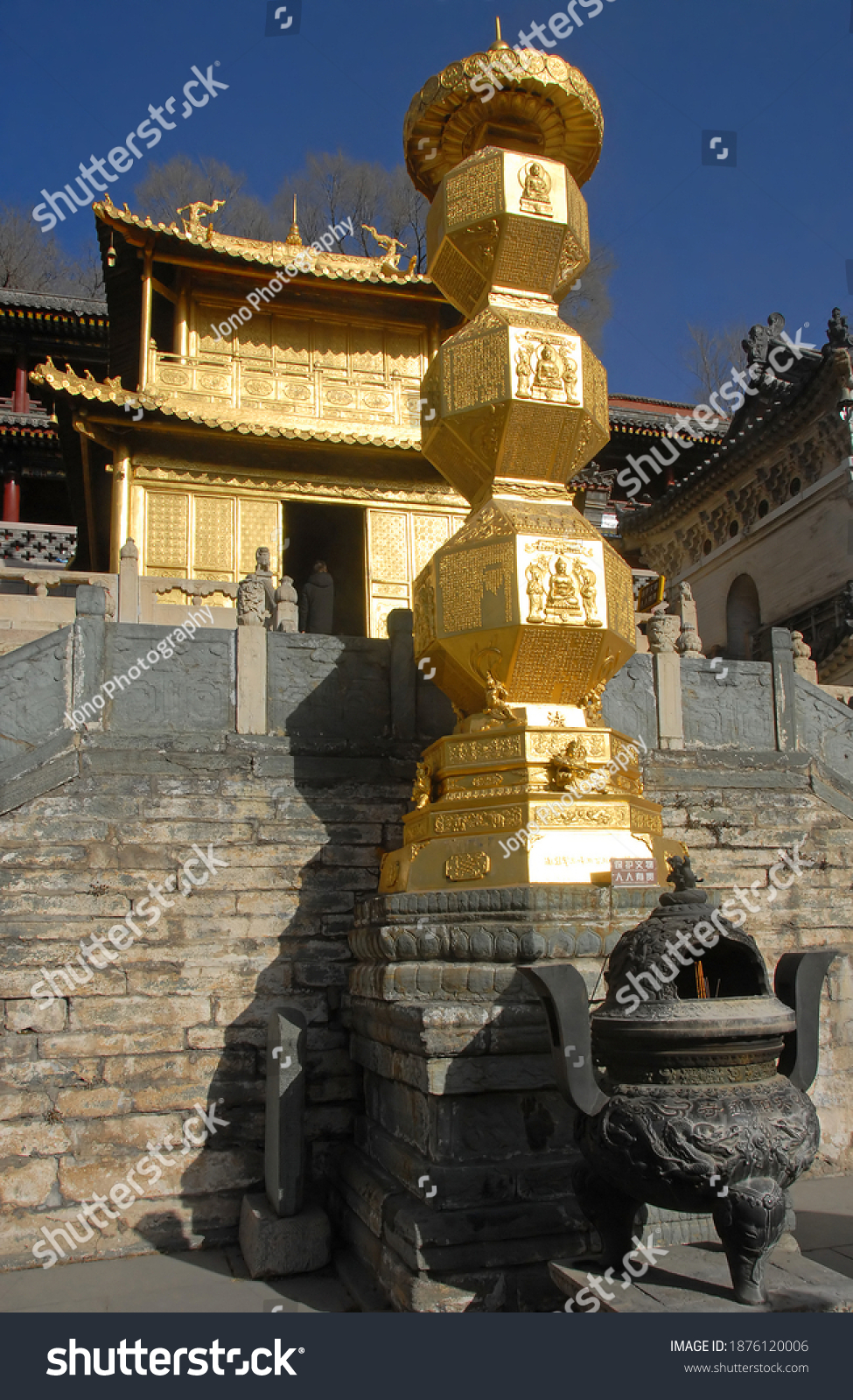
Xiantong Temple.
Conclusion
A visit to Xiantong Temple is a journey into the heart of Chinese history, spirituality, and artistry. The temple not only serves as a religious haven but also as a cultural landmark that speaks volumes of the rich traditions of Buddhism in China. Whether you come for the architecture, the art, or the peace, Xiantong Temple is an experience that resonates long after you leave its sacred grounds.
Planning Your Visit: A Practical Guide
Discovering Xiantong Temple: Your Essential Travel Guide
Nestled within the breathtaking scenery of Mount Wutai in Shanxi Province, Xiantong Temple (显通寺) stands as a significant testament to China’s rich Buddhist heritage. This ancient temple not only serves as a place of worship but also showcases the exquisite artistry and architectural prowess of ancient China. Here’s how to plan your visit to maximize your experience at this cultural gem.
Getting There
Location: Xiantong Temple is located in Taihuai Town, Wutai County, Xinzhou City, Shanxi Province. Its proximity to the central area of Wutai Mountain makes it easily accessible for travelers.
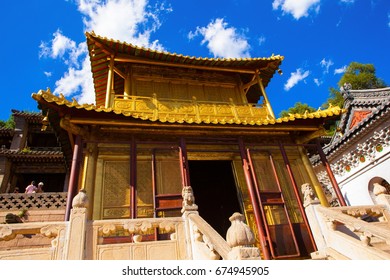
Xiantong Temple.
- By Public Transport: You can take local tourist buses that operate frequently between major points in Wutai Mountain. Taxis are also available for a more direct route.
- By Car: Renting a car or hiring a private vehicle offers flexibility, especially for exploring the surrounding scenic areas.
Best Time to Visit
To fully immerse yourself in the temple’s spiritual ambiance, plan your visit during Buddhist festivals. These times will not only enhance your experience with vibrant religious activities but also provide a deeper insight into the local culture.
- Recommended Visit Duration: Allocate 2-3 hours to explore the temple complex, allowing ample time to appreciate its intricate architecture and the serene environment.

Xiantong Temple.
Highlights of Xiantong Temple
- Main Hall: Home to the awe-inspiring statue of Sakyamuni Buddha, this hall is a focal point for both worship and reflection.
- Heavenly King Hall: Marvel at the stunning architecture and the intricately carved statues that adorn this hall.
- Sutra Library: A treasure trove of ancient texts, offering insights into Buddhist philosophy and history.
- Architectural Design: The temple complex is a remarkable example of traditional Chinese architecture, characterized by its wooden halls and copper pagoda.
Cultural Insights
- Meditative Atmosphere: The temple’s tranquil surroundings make it an ideal spot for meditation and introspection. Take a moment to soak in the peaceful ambiance.
- Art and Craftsmanship: Pay attention to the exquisite craftsmanship evident in the temple’s structure and the art pieces on display.
Practical Tips
- Dress Code: As a place of worship, it’s advisable to dress modestly. Comfortable walking shoes are recommended, as you will be exploring the temple grounds.
- Photography: Capture the beauty of the temple and its surroundings, but be respectful of areas where photography might be restricted.
- Food and Drink: Explore local vegetarian cuisine available nearby. It’s not only healthy but also an integral part of the Buddhist culture observed in the area.
Accommodation Options
While visiting Xiantong Temple, consider staying in nearby accommodations that range from hotels to guesthouses. Booking in advance is highly recommended, particularly during peak tourist seasons, to ensure availability.
Additional Attractions Nearby
While Xiantong Temple is a must-visit, the surrounding area offers additional attractions worth exploring:
- Tayuan Temple: Another significant Buddhist site within walking distance.
- Five Lords Temple: Experience the architectural beauty and cultural significance of this temple.
- Natural Scenery: Take time to explore the stunning landscapes of Mount Wutai, which includes hiking trails and scenic viewpoints.
Final Thoughts
A visit to Xiantong Temple is not merely a journey through history but a chance to engage with the profound spiritual and cultural tapestry of Buddhism in China. Whether you are a history enthusiast, a spiritual seeker, or simply an admirer of beautiful architecture, this temple promises an enriching experience. Plan your visit thoughtfully, and allow yourself to be swept away by the serene beauty of Xiantong Temple and its surroundings.
Tickets: Prices, Booking, and Tips
When planning your visit to Xiantong Temple, understanding the ticketing process, prices, and some useful tips will enhance your experience at this historic site. Here’s what you need to know:
Ticket Prices
- General Admission: The entry fee to Xiantong Temple is approximately ¥30 (about $4.50 USD). This fee allows you access to the temple grounds and its architectural marvels.
- Discounts: Children, students, and seniors can often enjoy discounted rates. It’s advisable to carry valid identification to take advantage of these reductions.
Booking Information
- Advance Booking: While tickets can typically be purchased on-site, it is recommended to book in advance, especially during peak tourism seasons or Buddhist festivals when the temple is likely to attract larger crowds.
- Online Platforms: Tickets can also be booked through various travel websites and local tourism apps, which may offer additional deals or bundled packages that include transportation or guided tours.
Visiting Hours
- Opening Hours: Xiantong Temple generally welcomes visitors daily from 8:30 AM to 5:00 PM. Arriving early can help you avoid crowds and provide a more serene experience as you explore the temple’s spiritual ambiance.
Travel Tips
- Getting There: The temple is conveniently located in the central area of Wutai Mountain. Local tourist buses and taxis provide easy access. If you prefer flexibility, consider renting a car or hiring a private driver.
- Best Time to Visit: To experience the temple’s rich cultural activities, plan your visit during Buddhist festivals. These occasions often include ceremonies and events that showcase the vibrant Buddhist traditions.
- Exploration Duration: Allocate about 2 to 3 hours for your visit to fully appreciate the exquisite craftsmanship of the temple and to meditate in its tranquil surroundings.
- Dress Code: As a place of worship, it’s respectful to wear modest clothing. Comfortable footwear is also recommended, as you will likely be walking on uneven surfaces.
- Photography: Capture the beauty of the temple, but be mindful of designated areas where photography may be restricted, especially during religious ceremonies.
By planning ahead and following these guidelines, your visit to Xiantong Temple will undoubtedly be a memorable journey through China’s rich Buddhist heritage and architectural grandeur. Enjoy your exploration of this sacred site!
How to Get There: A Complete Transportation Guide
Discovering the Path to Xiantong Temple: Your Transportation Guide
Visiting Xiantong Temple, a revered site nestled in the breathtaking landscape of Wutai Mountain in Shanxi Province, is a journey that blends spiritual discovery with the beauty of ancient architecture. Here’s how you can get there seamlessly, allowing you to fully immerse yourself in the rich cultural tapestry that awaits.
Reaching Xiantong Temple: Travel Options
1. By Air:
The nearest major airport to Xiantong Temple is Taiyuan Wusu International Airport (TYN), located approximately 250 kilometers away. From the airport, you can choose to:
- Take a Train:
-
Taiyuan to Wutai Mountain (Taihuai Town): High-speed trains from Taiyuan Railway Station run directly to the Wutai Mountain area. The journey takes about 3-4 hours. Once you arrive at the station in Taihuai, you can easily find local transport to Xiantong Temple.
-
Opt for a Private Car or Taxi:
- For more convenience, consider hiring a private car or taking a taxi from the airport to Wutai Mountain. This option allows for a direct and comfortable ride, taking around 4-5 hours depending on traffic conditions.
2. By Train:
If you’re already in China and near other major cities, you can opt for train travel:
- From Beijing:
-
Take a train from Beijing West Railway Station to Shuozhou, then transfer to a local bus or taxi to Wutai Mountain. The entire journey may take approximately 8-10 hours.
-
From Xi’an or Datong:
- High-speed rail connections are also available from these cities to Taiyuan or Shuozhou. From there, as mentioned, you can continue your journey via bus or taxi.
3. By Bus:
For budget-conscious travelers, buses offer an economical option:
- From Taiyuan:
-
Buses depart regularly from the Taiyuan East Bus Station to Wutai Mountain. The journey takes around 4-5 hours, with multiple departures throughout the day.
-
From Shuozhou:
- Direct buses are available from Shuozhou to Wutai Mountain, and this trip takes about 2-3 hours.
4. Within Wutai Mountain:
Once you arrive in Taihuai Town, the transportation options to Xiantong Temple include:
- Local Tourist Buses:
-
These buses frequently run between major attractions in the area, including Xiantong Temple. Tickets can usually be purchased on-site.
-
Taxis:
-
Taxis are also available and can be hailed easily in Taihuai. Ensure to confirm the fare beforehand, as not all drivers may use a meter.
-
Walking:
- If you enjoy hiking and wish to soak in the natural beauty, Xiantong Temple is accessible via walking trails from nearby accommodations and attractions.
Final Tips for Your Journey
- Advance Reservations:
-
If you choose to rent a car or hire a driver, it’s advisable to arrange this in advance, especially during peak tourist seasons.
-
Check Local Regulations:
-
Be aware that only a limited number of vehicles are allowed into the scenic area each day, so plan your arrival accordingly.
-
Prepare for the Climate:
-
Wutai Mountain’s weather can be unpredictable. Dress in layers and be prepared for changes in temperature, particularly if you’re visiting in spring or autumn.
-
Cultural Etiquette:
- As Xiantong Temple is a significant Buddhist site, be respectful of the customs and practices observed by pilgrims and visitors alike.
Embarking on this journey not only leads you to one of the most historically significant temples in China but also immerses you in the serene atmosphere of Buddhist culture. Safe travels, and may your visit to Xiantong Temple be as enlightening as it is memorable!
Local Cuisine and Accommodation Nearby
When visiting Xiantong Temple, it’s essential to immerse yourself not only in its rich history and architecture but also in the local flavors and comfortable accommodations that enhance your experience. Nestled in the serene landscape of Wutai Mountain, there are delightful culinary and lodging options nearby that cater to both traditional tastes and contemporary comforts.
Local Cuisine
1. Vegetarian Delicacies of Mount Wutai
Given the temple’s Buddhist heritage, vegetarian cuisine is prevalent in the area. Many local restaurants pride themselves on serving dishes that are not only healthy but also rich in flavor. Here are some must-try dishes:
- Buddhist Vegetarian Meals: Often prepared with seasonal vegetables, mushrooms, and tofu, these meals are a delightful blend of textures and flavors. Look for restaurants that offer set meals, which typically include rice, soup, and a variety of small dishes.
- Noodle Dishes: Hand-pulled noodles are a specialty in Shanxi and can be found in many eateries. Try the Dao Xiao Mian (knife-cut noodles) served with a savory broth and fresh vegetables.
- Local Snacks: Don’t miss out on Shanxi’s famous vinegar and pancakes, which make for a perfect snack while exploring the temple grounds.
Many of these culinary delights can be found in small family-run restaurants or food stalls scattered around the area. Engaging with local vendors can also provide insights into the cultural significance of these dishes.
Accommodation Options
Finding the right place to stay can significantly enhance your experience at Xiantong Temple. Here are some recommended accommodations that offer both comfort and access to the temple:
1. Wutai Mountain Hotel
– Description: This hotel offers comfortable rooms with stunning views of the surrounding mountains. It features modern amenities while maintaining a traditional feel.
– Distance: Approximately 10 minutes by taxi from Xiantong Temple.
– Highlights: The hotel often hosts cultural events and has an on-site restaurant known for its vegetarian cuisine.
2. Taihuai Town Guesthouses
– Description: For a more intimate experience, consider staying in one of the charming guesthouses in Taihuai Town. These often feature traditional decor and personalized service.
– Distance: Just a short walk from the temple.
– Highlights: Enjoy homemade meals and the warm hospitality of local families who run these guesthouses.
3. Xiantong Temple Inn
– Description: Located right near the temple, this inn is perfect for those who wish to immerse themselves fully in the spiritual atmosphere.
– Distance: Steps away from the temple entrance.
– Highlights: The inn offers simple accommodations with a focus on tranquility, making it ideal for meditation and reflection.
Conclusion
Whether you choose to savor the flavors of Buddhist vegetarian cuisine or opt for a cozy stay in a local guesthouse, your experience at Xiantong Temple will be enriched by the culinary delights and comfort of the surrounding area. Embrace the local culture, and allow yourself to fully engage with the serene environment that has drawn pilgrims and tourists alike for centuries.
Frequently Asked Questions
Frequently Asked Questions About Xiantong Temple
1. Where is Xiantong Temple located?
Xiantong Temple is situated in Wutai Mountain, Xinzhou, Shanxi Province, China. It is one of the most significant temples in this renowned Buddhist mountain range, easily accessible from the central area of Wutai.
2. What is the history of Xiantong Temple?
Xiantong Temple boasts a rich history, dating back to the Tang Dynasty (618–907 AD). It has served as a pivotal site for Buddhist worship and education throughout the centuries, making it one of the oldest and most revered Buddhist temples in China.
3. What can I expect to see inside the temple?
Visitors to Xiantong Temple can admire its exquisite architectural design and detailed craftsmanship. Highlights include the Main Hall, the Heavenly King Hall, and the Sutra Library. The temple is also home to beautifully carved Buddha statues, particularly the awe-inspiring statue of Sakyamuni Buddha.
4. How much time should I allocate for my visit?
A visit to Xiantong Temple typically takes about 2 to 3 hours. This allows ample time to explore the temple complex, appreciate its architecture, and soak in the tranquil atmosphere.
5. Are there any cultural events or festivals held at the temple?
Yes, Xiantong Temple hosts various religious activities during significant Buddhist festivals. Visiting during these times provides a unique opportunity to experience vibrant cultural practices and participate in traditional ceremonies.
6. How do I get to Xiantong Temple?
Travelers can reach Xiantong Temple by taking local tourist buses or taxis from nearby towns. The temple is conveniently located within the scenic area of Wutai Mountain, making it an easy addition to your travel itinerary.
7. What should I wear when visiting the temple?
Visitors are encouraged to dress modestly and respectfully, adhering to traditional norms when entering sacred spaces. Comfortable footwear is also recommended, as you may be walking on uneven terrain.
8. Are there accommodations nearby?
Yes, there are various hotels and guesthouses near Wutai Mountain that offer comfortable lodging for travelers. It’s advisable to book your accommodations in advance, especially during peak travel seasons, to ensure availability.
Final Thoughts on Your Trip
As you prepare to wrap up your journey to Xiantong Temple, take a moment to reflect on the rich tapestry of experiences that this sacred site has afforded you. Nestled within the stunning landscapes of Mount Wutai, Xiantong Temple is not just a place of worship; it is a profound encounter with history, artistry, and spirituality.
Embrace the Serenity
Walking through the temple’s ancient halls, you may have felt an overwhelming sense of peace. The exquisite Buddha statues and intricate architectural details are a testament to the craftsmanship of ancient artisans. In moments of quiet contemplation, allow the tranquil environment to wash over you, offering a chance to meditate on your own journey.
Cultural Insights
Your visit to Xiantong Temple is also a gateway into the profound Buddhist culture that has flourished here for centuries. Engaging with the rituals and observing the practices during Buddhist festivals provides an invaluable glimpse into the heart of Chinese spirituality. This is a place where time seems to stand still, allowing you to connect with a lineage of beliefs that have shaped lives for generations.
A Journey Worth Remembering
As you bid farewell to Xiantong Temple, consider how this experience fits into the larger narrative of your travels in Shanxi Province. From the breathtaking architecture of the Hanging Temple to the serene landscapes of Yungang Grottoes, each destination you’ve explored contributes to a deeper understanding of China’s multifaceted history and culture.
Final Thoughts
In closing, remember that the true essence of a journey lies not just in the sights you see, but in the moments you share and the knowledge you gain. Whether you’ve come to seek spiritual enlightenment, appreciate ancient art, or simply connect with nature, Xiantong Temple has undoubtedly left an indelible mark on your heart.
Take these memories with you, and let them inspire your future adventures. Safe travels, and may your journey continue to unfold with wonder and discovery!